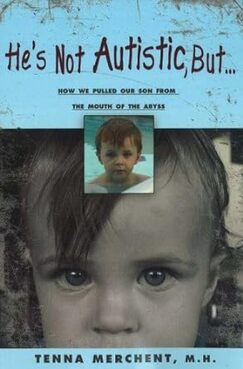What is the most concerning or destructive thing that is going on right now in your child’s world? Where to look for HELP?
UNIT 7 – 0 Who May Help? INTRODUCTION (UNIT 7 – 0) CHAPTER 1 INSTRUCTIONAL PROGRAMS & THERAPIES
Luker, S. (2024) Who May Help? Getting ‘help’ for the child with autism is the key. Learning about who may help. Finding, or deciding on an intervention, therapy, program, and/or treatment program being offered to your child can be somewhat overwhelming. Then, there are all the things that you and your child will be subjected to, in order to qualify.
Suma, et al. (2016) tell us that early diagnosis and the severity of the child’s ‘interactive difficulties’ appear to influence what the parents do next. Seemingly, lower quality interactions and/or growing isolation between parents and child, can lead parents to look for interventions.
The ‘interactive difficulties’ they talk about were problems with ‘joint engagement’ and communication of ‘shared interests’. These seemed to be the greatest challenges rushing many of the 79 families in this study to find help. Ironically, parents complained that after finally deciding to get help, they couldn’t find services in their area, or they had to get on long waiting lists.
< My Thoughts > “…lead parents to look for interventions.”
A child’s ‘interactive difficulties’ with the environment, as well as with other family members, can lead parents to more actively look for solutions. There are other examples, such as the little brother or sister with autism tantrumming, or becoming physically aggressive when strangers are in the home. Autism affects everyone in the family. Shannon Brodie’s afterschool experience (in the following, Brodie 2013), is just one example.
Brodie, P. (2013) takes us through his sister Shannon’s unexpected afterschool experience – I think the first time I really realized there was something wrong with Scott was when I was around 8 years old. That was when I started having friends over for longer than a few hours, and they asked me why the cupboards and refrigerator were locked? Before my friends started questioning me, I always thought it was a normal thing to have everything locked at all times, nothing strange.
Before looking for a treatment or educational program, prioritize your child’s ‘needs’ and prioritize your ‘wants’.
In other words…
What are presently the most concerning
or harmful things going on
right now in your child’s world?
Much diagnostic information that these ‘service inquiries’ look for will come from parents. So once again, be sure that you know your child well enough to give insightful but honest responses to all inquiries. If your child is in school, then teachers, classroom aides, and other school personnel will also have critical input. Videotaping (most smart phones have apps) can show what you may have difficulty expressing in words. You are looking for a way to ease the current situation. This may take time and diligence.
Luker, S. (2024) CHAPTER 2 – TRADITIONAL THERAPIES (Speech & Language Therapy (SLT) (ST), Occupational Therapist (OT)
INTRODUCTION (UNIT 7 – 0) CHAPTER 2 – THERAPIES
THERAPIES ~‘Therapies’ are those proven through standard scientific methods; to be successful in treating symptoms, in the majority of cases. As well as, having being ‘proven’, through ‘Gold Standard’ or ‘Best-Practices’ consideration, these therapies will usually have a track record of readily being approved by most insurance companies.
Advice to parents by the Centers for Disease Control & Prevention (CDC) – “An ideal treatment coordinates therapies to address the core disorders the child is experiencing. An effective treatment program builds on the child’s interests and engages the child. More reliable than miracle cures, which appear in magazines, parents should seek out the ‘thoroughly researched’ and ‘well-documented data’ derived from carefully controlled clinical research.”
< My Thoughts > “…excellent reliability.”
The caveat here to a treatment being considered to have ‘excellent reliability’, is that these programs have fidelity in presentation, qualified and certified personnel, as well as consistency in participant evaluation. All persons involved, child, parent, and personnel must desire and believe in the same goal; over time. And, just because it takes over your life and keeps your ‘wild child’ occupied for most of the day, doesn’t necessarily mean that it has been successful. The 'business of autism' is unregulated. Understand what that means.
Choosing the program which meets your child’s needs right now and, in the future, takes careful finding, funding, and planning. Retrieved online from a Pediatric Neurology site – http://www.childbrain.com/pddq11.shtml which offers that parents look at these three ‘behavior’ priorities –
1. First priority: Temper tantrums & life-threatening behavior; such as hitting, throwing objects, jumping from high places, running into the street, or refusing to eat.
2. Second priority: Learning sitting skills. Without this skill the child cannot sit to eat, or to learn, or use the toilet.
3. Third priority: Dealing with unusual or bizarre habits which may result in social isolation. Such as – Pervasive repetition of activities, self-stimulatory behavior, production of unusual sounds, and/or severely restricted interests.
Merchent, T. (2007) – I was afraid that what I said would influence their expectations of my son and his behavior, and become a self-fulfilling prophecy.
At this point in time I had taken Clay to anyone I thought might be able to help.
- Two pediatricians
- Osteopath
- Homeopath
- Ear, nose, and throat specialist (ENT)
- Allergist
- Naturopath
- Emotional healer
- Herbalist
- Speech therapist
- Occupational therapist
- Immune disorder specialist
The osteopath and herbalist were the only two who seemed to be helping. All the others said they could help, but we didn’t see any results. With a strict allergy diet, and removal of incoming aluminum, Clay’s head-banging and toe-walking had almost stopped, but he still wasn’t speaking. He was still cranky, sickly, and not sleeping well.
Luker, S. (2024) INTRODUCTION (UNIT 7 – 0) WHO MAY HELP? CHAPTER 3 – OTHER THERAPIES
Rudy (2020) reminds us that some ‘therapies’ are those which do not have the advantage, assurance, or insurance given to treating core autism symptoms. These are therapies which usually enjoy hopeful anecdotal success stories perpetuated by certain people in the autism community.
< My Thoughts > “…treating core autism symptoms.”
Choosing a ‘well-established’ or ‘other’ program for your child is such a slippery slope because there is so much at stake – time, money, and possibly even developmental regression.
Siri & Lyons (2014) caution that often, the word ‘program’ is tacked onto interventions and/or therapies in order to indicate a set or group of activities dedicated to a certain intervention or therapy. For instance, ‘behavior intervention program’, or, ‘speech therapy program’. In either case, the ‘program’ would most likely offer a series of sessions; or activities, intended to create a more desirable trajectory in the child’s development. These interventions usually take place during a ‘developmental period’. Schools may refer to special ‘programs’ offered to students with disabilities. Also, ‘program’ may be an abbreviation for ‘instructional program’.
References:
Brodie, P. (2013). Secondhand Autism; eBook Edition.
Suma, K., Adamson, L., et al. (2016). After Early Autism Diagnosis: Changes in Intervention and Parent – Child Interaction; Journal of Autism & Developmental Disorders; V26, p2720-2733.
Luker, S. (2024); Know Autism, Know Your Child with < My Thoughts > by Sara Luker; Retrieved online from – www.sarasautismsite.com
Merchent, T. (2007). He’s Not Autistic, But – How We Pulled Our Son from the Mouth of the Abyss; eBook Edition.
Rudy, L. (2020). Get Autism Treatments Covered by Health Insurance Autism Coverage May Be More Generous Than You Think; Retrieved online from – www.verywellhealth.com/
Siri, K. & Lyons, T. (2014). Cutting-Edge Therapies for Autism; 4th Edition; Skyhorse Publishing, New York, N.Y.
Note: DISCLAIMER – Autism ‘intervention’, as with the phrase ‘Early Detection / Early Intervention’, may simply mean to attempt an ‘action’, or attempt to ‘change a course’ or ‘trajectory’ of the person’s autism. Any expectation for a successful ‘change’ must have the cooperation of the participant, the parent, and/or the assigned therapist. Words such as, ‘intervention’, ‘treatment’, ‘therapy’, ‘service’, or ‘program’ imply ‘cure’, or ‘long-term’ positive effect. That is NOT my intention here, and all information is presented without intent or suggestion of status or effectiveness.
End of DAY NINETEEN.
Note: Excerpts from the books – (13% indicates location in the Kindle version of the eBook, instead of page numbers).
Sharing of my website and BLOG Comments welcomed. Thank-you to those of you who have sent comments... much appreciated!
Regards,
Sara Luker



 RSS Feed
RSS Feed